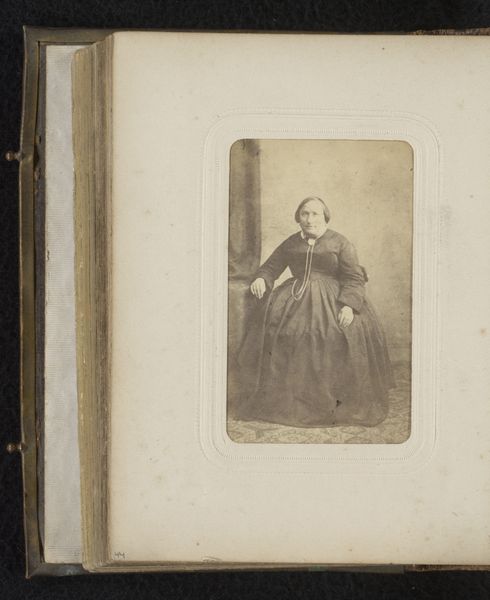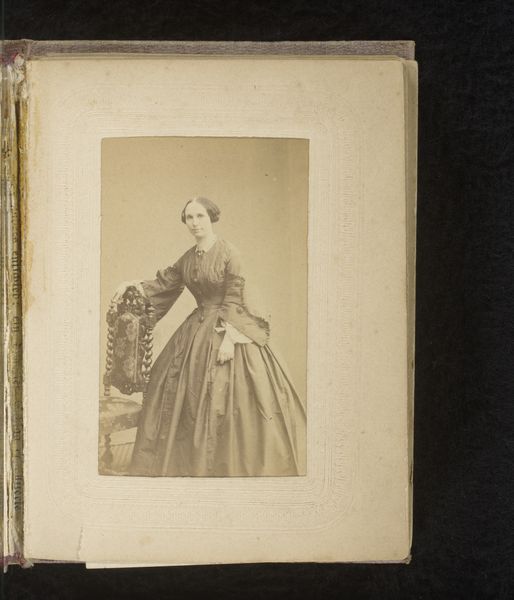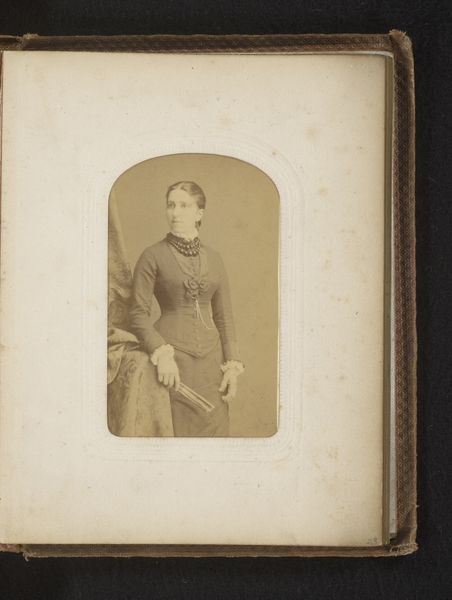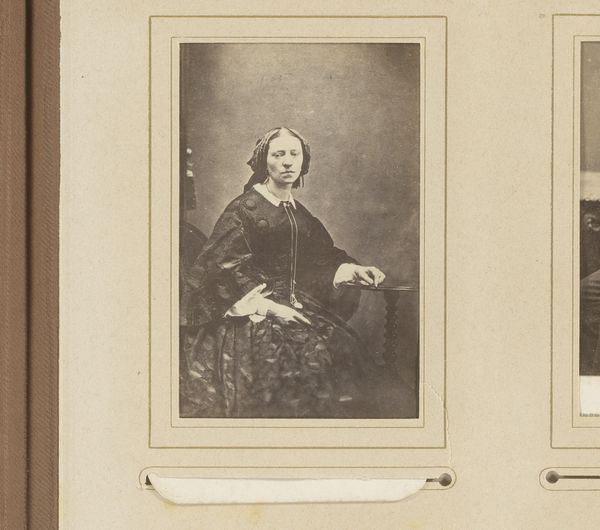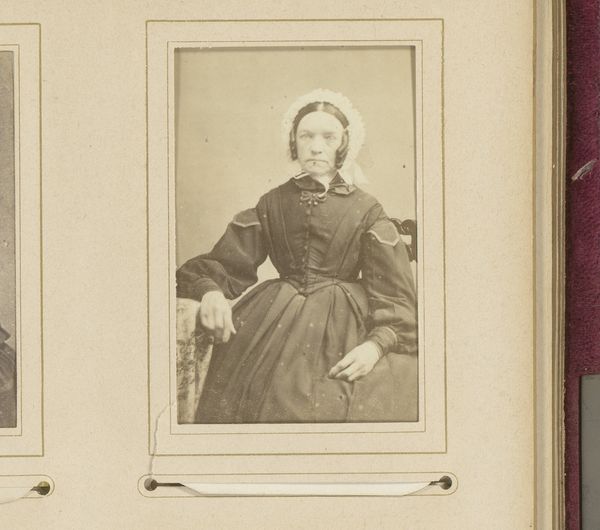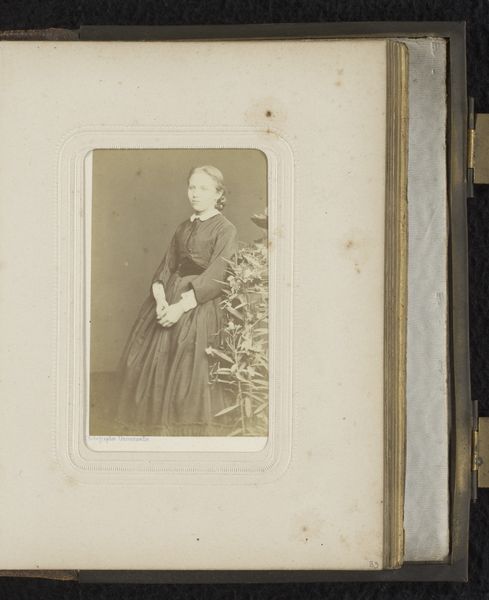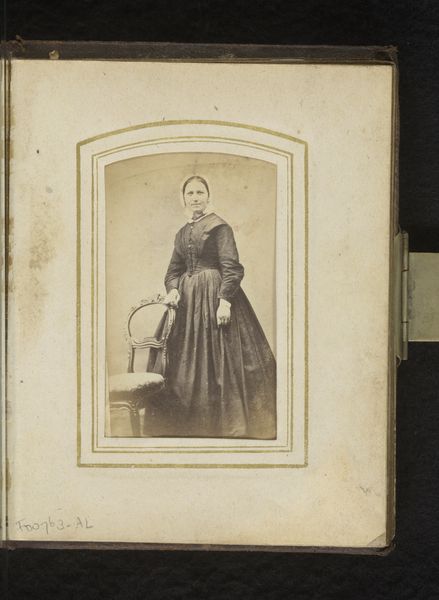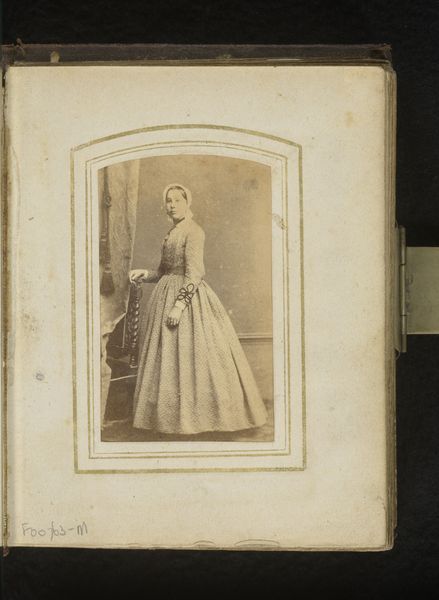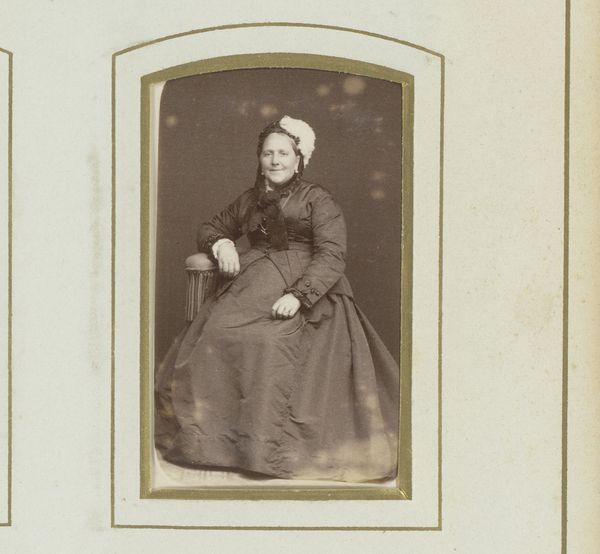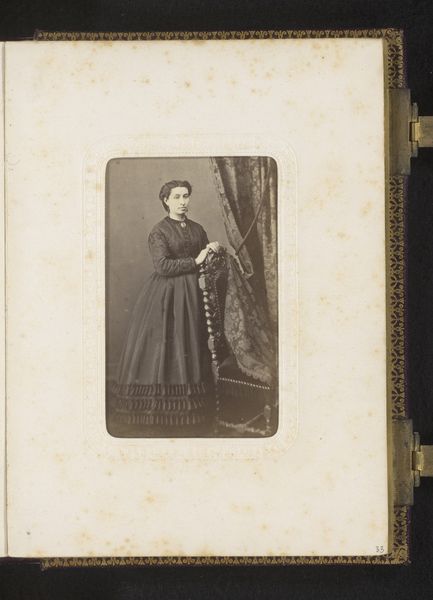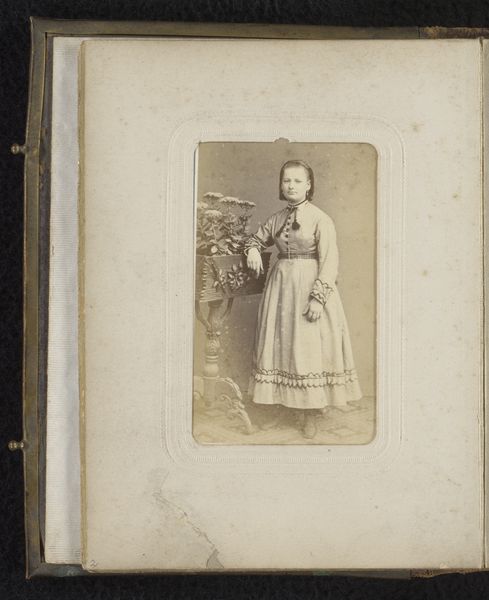
photography, gelatin-silver-print
#
portrait
#
photography
#
gelatin-silver-print
#
academic-art
Dimensions: height 87 mm, width 53 mm
Copyright: Rijks Museum: Open Domain
Editor: Here we have a gelatin silver print, entitled "Portrait of a Woman Standing by Furniture" by Pierre Eugène Thiebault, dating sometime between 1852 and 1870. It's a pretty standard formal portrait, but I am curious to learn more. What historical and social context is relevant when looking at an image like this? Curator: Well, the mid-19th century was a pivotal time for photography, wasn't it? It was transitioning from a novelty to a means of social documentation and even artistic expression. Who was getting their portrait taken during this period, and why? Editor: Presumably, this would mostly be affluent individuals since photography was expensive at the time? Was getting a portrait done a status symbol? Curator: Precisely. This photograph tells us a lot about the subject’s social standing, and maybe a little about her aspirations. Her pose and clothing signal propriety and status. Consider also the setting itself, the furniture, which suggests a controlled environment. Can we assume this control extends to the representation of women in society at the time? Editor: So, beyond just a picture of someone, it’s a window into the social conventions and power structures of that era. I guess these early photographs can give hints about the relationship between social status, gender, and the public image in 19th century society? Curator: Exactly. Early portraiture played a role in reinforcing societal norms while offering individuals ways to assert their identities within them. Editor: It's amazing to think that what seems like a simple photograph has so much to say about society itself. I learned a lot. Curator: Indeed, understanding the cultural and historical factors really enriches our understanding of such portraits.
Comments
No comments
Be the first to comment and join the conversation on the ultimate creative platform.

